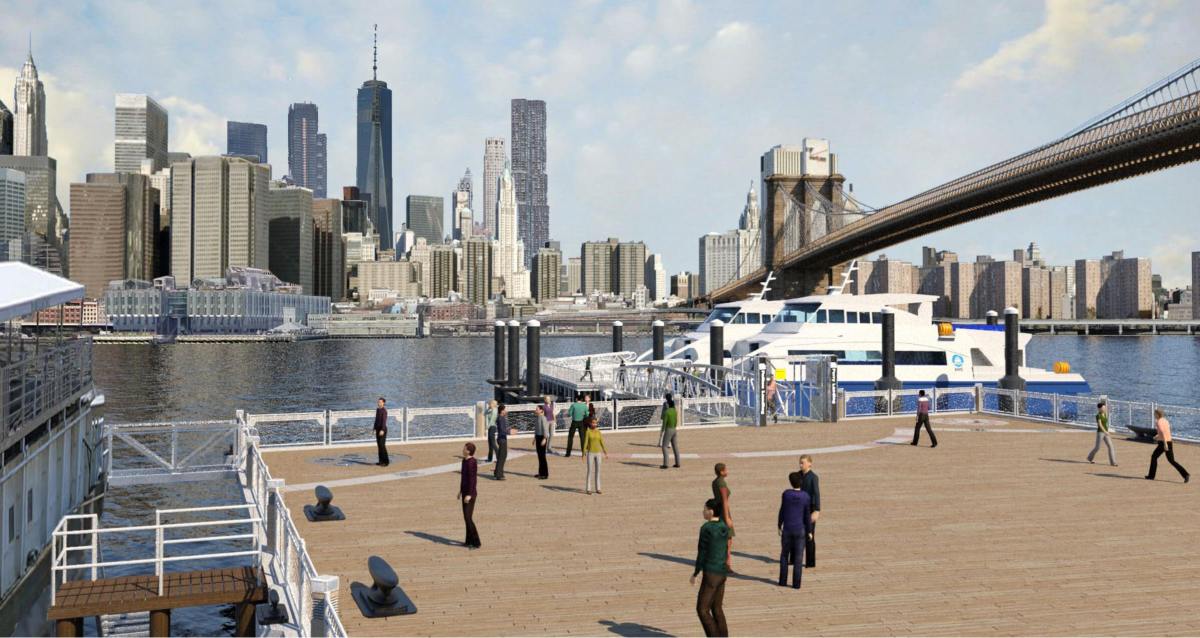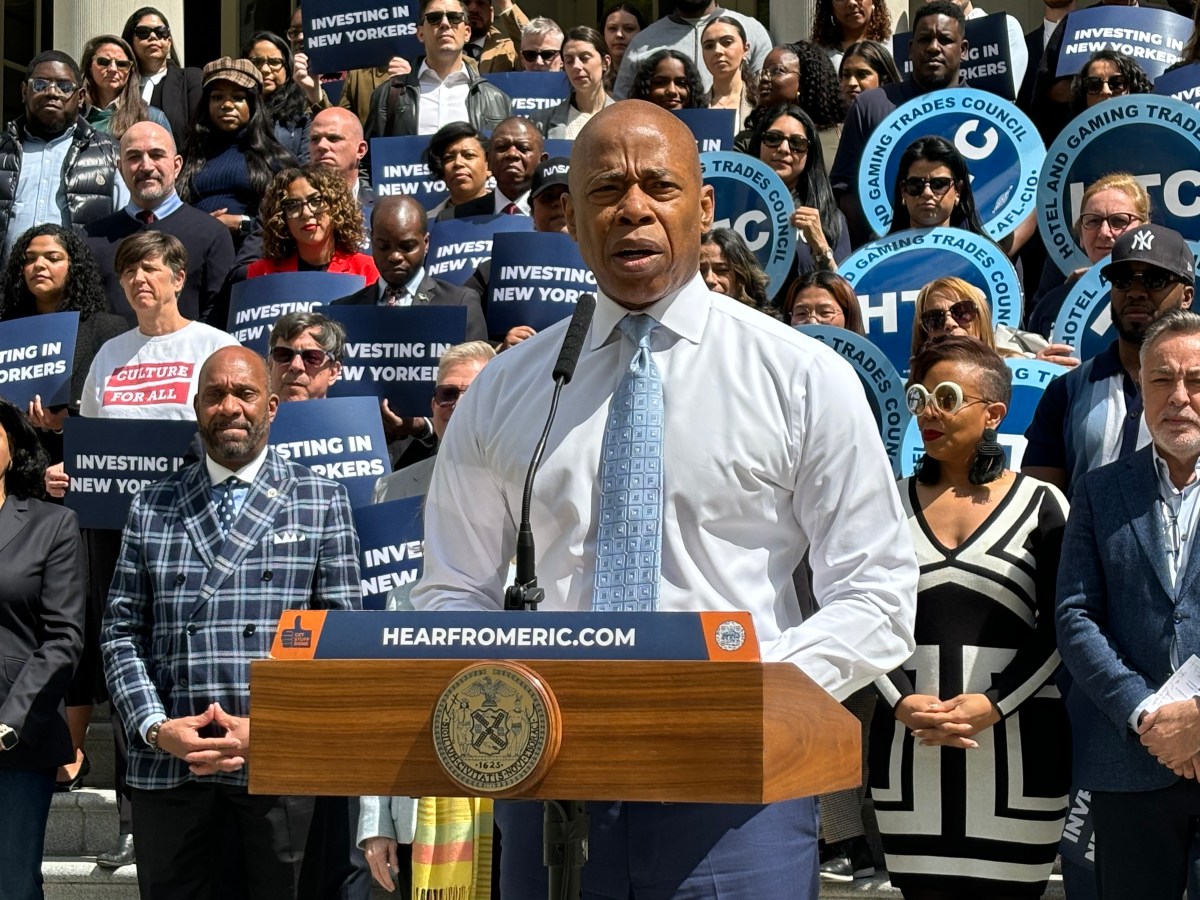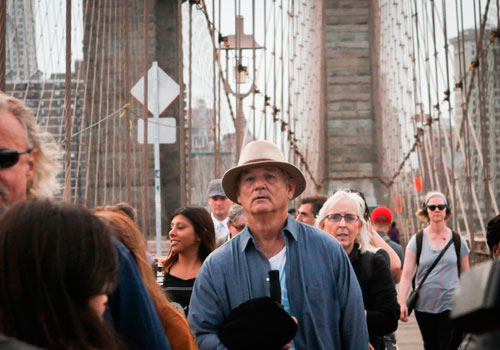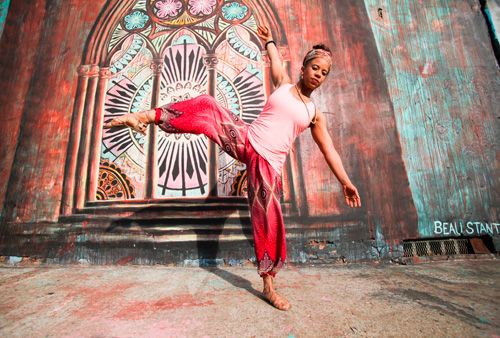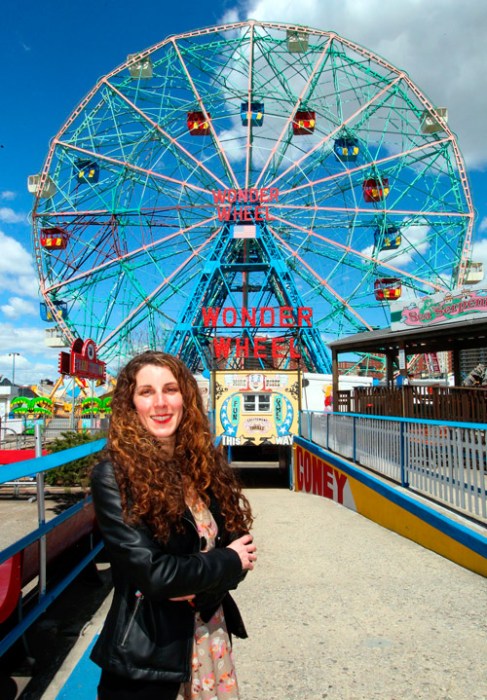Locals are worried about potential overcrowding at the Fulton Ferry Landing in Brooklyn Bridge Park, as the beloved pier gears up to host a new ferry stop and an oyster bar.
“It’s commercialization of a once quiet, reflective usage of that space,” said Bill Stein of the civic group Fulton Ferry Landing Association. “This was public space intended for somewhat quiet use and that is now gone by the wayside.”
The dock at the foot of Old Fulton Street was the site of the original Brooklyn Ferry, which first set sail across the East River to Manhattan in 1642, and was refurbished into a cherished open space with extraordinary views of the Brooklyn Bridge and the Big Apple in 1997.
But now, area preservationists and neighborhood activists have raised concerns that the the arrival of a new seasonal oyster bar and the relocation of a city ferry stop to the pier — which up until recently docked at the nearby Pier 1 — will leave little space for folks who aren’t spending money on food or waiting on line for a boat.
“All you have is concessions and gone is what made the pier special,” said Doreen Gallo of the Dumbo Neighborhood Alliance.
The city’s business-boosting Economic Development Corporation, which runs the ferry, closed their Pier 1 stop on April 5, and they plan to reopen a new and improved berth at the Fulton Ferry Landing by mid-June.
The $4.7 million overhaul will include more wheelchair-friendly access to the boats and the new slips will make it easier for boats to dock amid East River currents, according to an April 5 EDC presentation to local community members.
The agency plans to organize queues for three different ferry routes at the west end of the pier, which Stein said would block access to the custom-designed railings lined with Walt Whitman’s famous “Crossing Brooklyn Ferry,” and bronze reliefs in the deck depicting historic scenes, such as local Native American settlements and the original sailboat crossings.
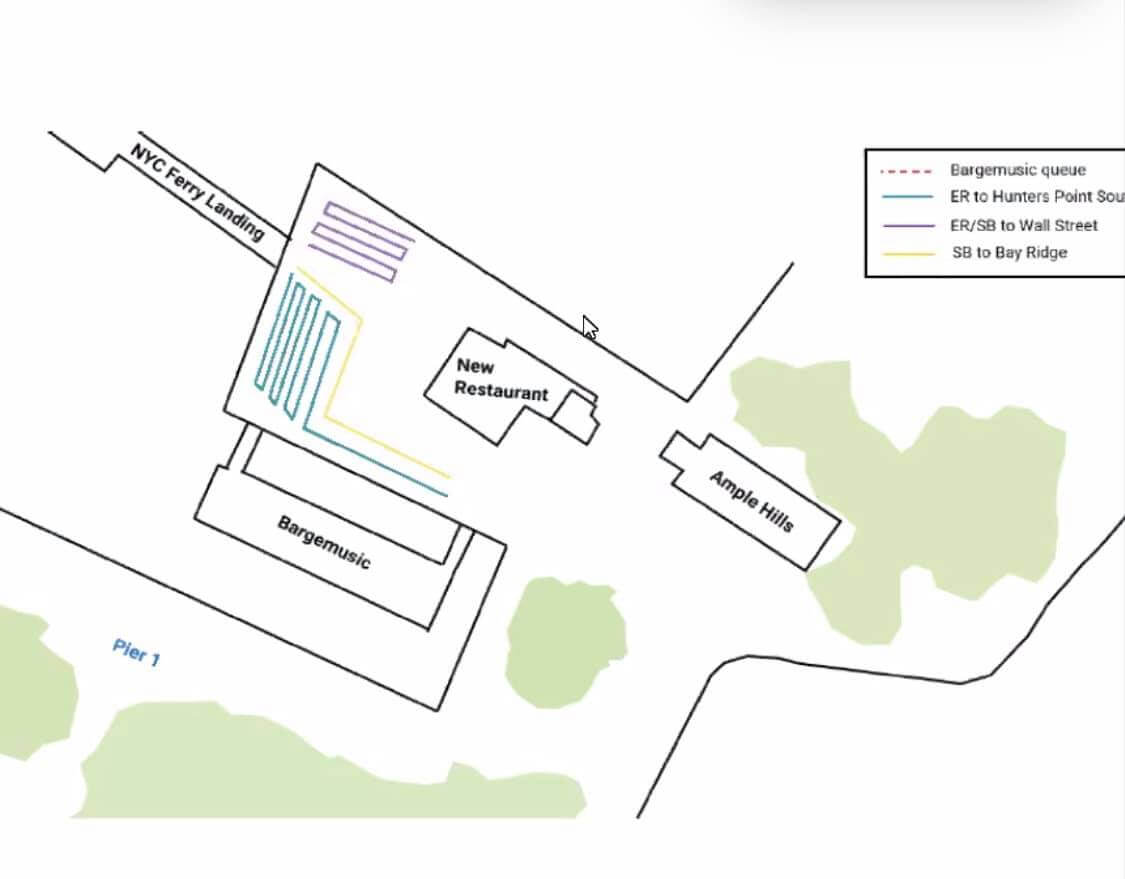
“If you take a look at the potential for how many people will be snaked back in the lines and the oyster bar, the usage of the pier will be changed dramatically,” he said. “The architectural designers built it as a place where people would just walk to and take in the views.”
The roughly 14,000 square-foot pier — about the size of three basketball courts — will also be home to a new seasonal oyster bar by brothers Miles and Alexander Pincus, who operate the docked oyster and cocktail bar Pilot at Brooklyn Bridge Park’s Pier 6.
The restaurateurs planned to open the Fulton Ferry outpost in 2020, which originally included a docked vintage FDNY fireboat in addition to the on-pier seating, but postponed the opening due to COVID-19 — and they now plan to debut the eatery this summer, Alexander Pincus told local Community Board 2 during a liquor license application hearing on April 7.
Pincus said they would hold off on opening the fireboat for now due to its tight quarters amid the pandemic.
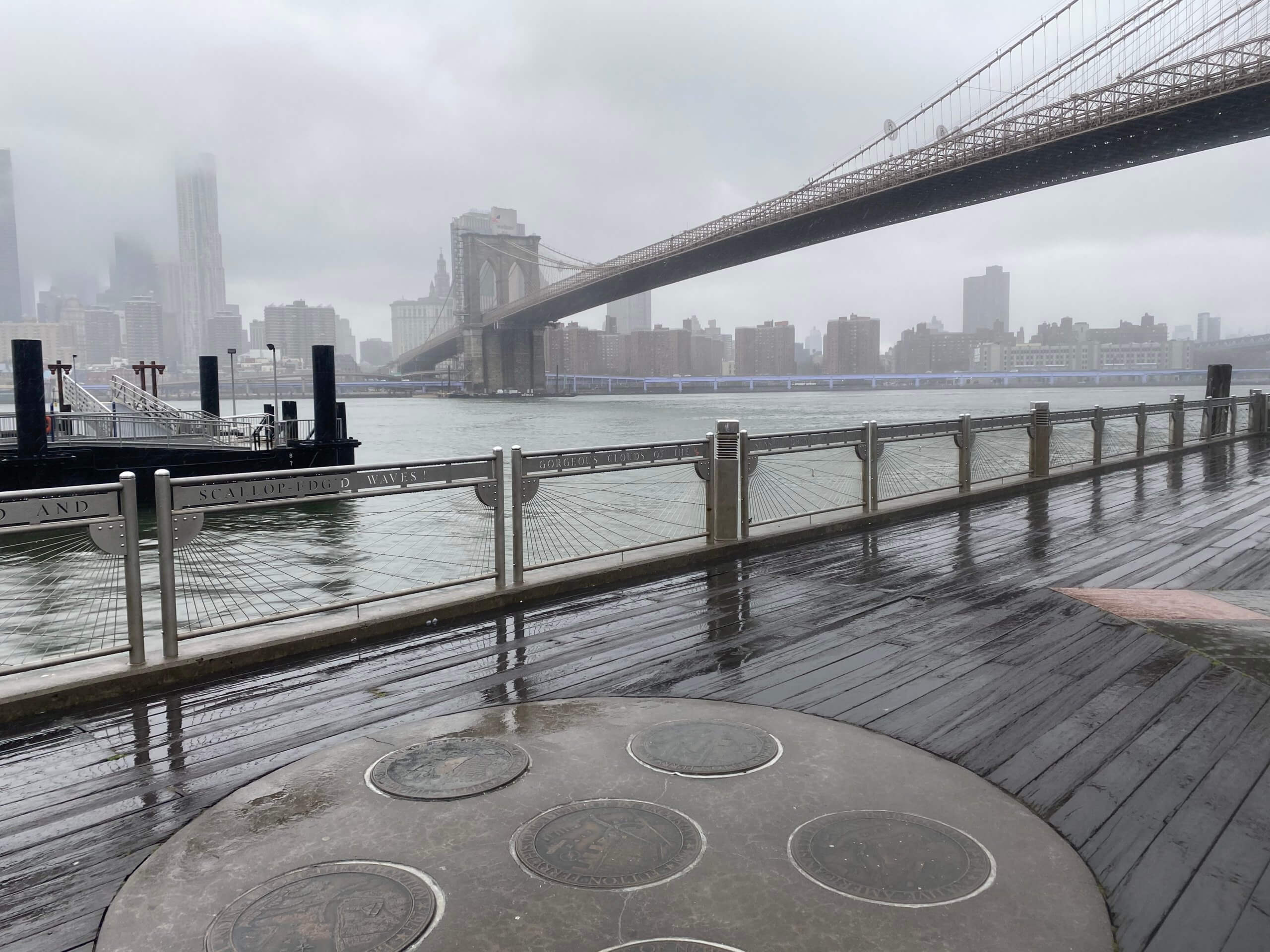
The pier has been home to concessions for years, including currently the floating music venue Bargemusic, which plans to reopen on April 30, Ample Hills Creamery, and Buzz Bar, which up until 2018 served booze and food at the pier in the exact spot where the Pincus brothers want to open shop.
The head of Brooklyn Bridge Park Corporation, which took over managing Fulton Ferry Landing from EDC in 2018, said locals’ fears of privatization and overcrowding were unwarranted given that the dock has been home to concessions before.
“The only thing that’s really new is the ferry,” said Eric Landau. “We have a long-standing history of understanding exactly how crowded the pier is with three of the four activities already taking place there and we can tell you it’s not that crowded there.”
Landau said that the front of the pier will not be blocked off to visitors due to ferry lines, and that moving boat service there made sense to better run the waterborne public transit.
“We believe from a park management [perspective] that it’s a better location and will not have a negative impact on the pier including those that will go to the pier and just enjoy the poem,” he said. “I don’t think it takes away from the historic landing, it’s the Fulton Ferry Landing and the ferry’s coming back.”


